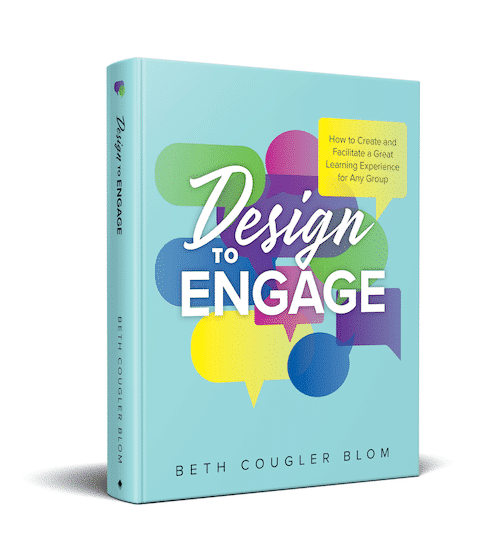To start designing for active learning, consider your session as an opportunity for you to share what you know with participants but also a chance for them to share what they know with each other. In active learning environments we aim to bring everyone’s experience and knowledge into the room, not just the facilitator’s.
Even if you think your participants don’t know anything about the topic, it’s still best to design sessions that include lots of active learning opportunities. Your participants will likely surprise you; they probably know more than you think. They will bring insights from their experiences with other related topics or situations to the scenarios you are discussing, enriching the learning situation. You can also create opportunities for the group to think about the topic by allowing them to guess at answers and ask lots of questions. Both of these strategies will help everyone engage with the material more deeply.
There are other ways to involve your participants deeply in learning situations. A year or two ago, my family went on a road trip on the Cariboo Gold Rush Trail here in British Columbia. We ended up in Barkerville, an historic town that features more than 125 heritage buildings as a living history museum. During our visit, my daughter and I participated in a school classroom experience. We were required to wear bonnets, sit up straight in wooden desks, raise our hands to ask a question and stand and state our name before we answered the teacher’s questions. Participating for forty-five minutes in an 1860s classroom was long enough for me, but it sure gave me first-hand knowledge of what it might have been like to attend school more than 150 years ago. What we experienced in Barkerville was a great example of both authentic and experiential learning.
Authentic learning experiences are ones that are as close to real life as we can get them while experiential learning is often described as “learning by doing.” If we keep these concepts in mind as we design learning experiences, it can help us create opportunities to immerse our participants in doing things much more often than just hearing about them. And when people do things, they can remember them longer.
If you create one-on-one learning experiences, such as helping a client develop life skills by teaching them how to shop for food in a grocery store, and you’re in the grocery store when you do it, you’re already carrying out both authentic learning and experiential learning. You’ve created an opportunity for that person to do the same thing they would do in real life in the same environment.
However, if you tend to spend more time in training rooms with your participants, you may have to get a little more creative about how to devise authentic and experiential learning opportunities in your topic area. For example, instead of showing participants what a budget looks like on a PowerPoint slide and asking them to watch while you create one, you could ask them to create a budget themselves either on paper or in a program such as Excel. While you might still choose to do the on-screen demonstration, your end goal is supporting participants to create a budget on their own—which is the really useful and experiential part for them.
I’ve spent a lot of time in my career supporting faculty members in a university environment as an instructional designer. I had a great conversation once with a faculty member that helped her create a more authentic assessment for her students. (An assessment is a way to check whether students have learned the thing we intend them to learn.) At the beginning of our conversation, she told me she wanted her students to learn about proposal writing, so she was going to have them write an essay about it. This seemed like a mismatch to me, so I asked her, “What do you think about asking them to write a proposal to learn about proposal writing?”
Her face lit up. “Yes!”
Likely not everything you plan in your session is going to be authentic or experiential for your participants. But they are good concepts to keep in mind. Put simply, active experiences help people engage and learn.
This article is an excerpt from the book, Design to Engage: How to Create and Facilitate a Great Learning Experience For Any Group by Beth Cougler Blom. Beth is a learning designer and facilitator who works with clients across all sectors to help them create effective learning experiences, both face-to-face and online. She can be reached through bethcouglerblom.com.







